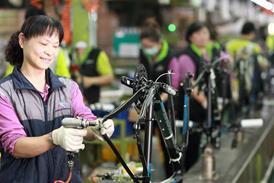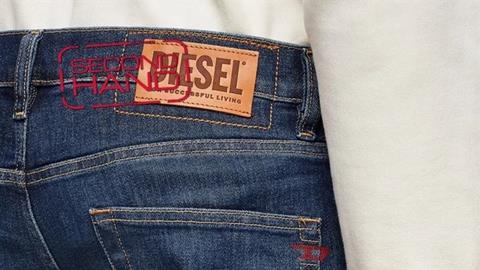Diesel’s Second Hand collection comprises garments brought back into store by consumers and then given a second life, with a combination of Polygiene treatments playing a key role.
The denim items are carefully evaluated and reconditioned locally with Diesel suppliers. The secondhand products are then sold at Diesel stores in Italy and Germany and online on the brand’s website.
The reconditioning involves cleaning, with each garment washed and sanitized; small repairs, such as missing buttons or broken zips, small defects and minor signs of tear and wear; and makeup, with a “Second Hand” logo printed on the inside and outside of each denim piece.
Then, there is the additional final step which is in many ways the most important: At this point, each garment is treated with the Polygiene OdorCrunch™ Stays Fresh and Polygiene ViralOff™ technologies.

In combination, these treatments apply antimicrobial, odor-resistant and garment-protective properties to the denim product. Both technologies help ensure it stays fresh and hygienic, so it needs to be washed less often, which further extends its life.
Diesel’s Second Hand initiative went through a trial phase in the summer of 2021, with denim buyback programs at selected Italian stores, and 900 pairs of jeans were collected and reconditioned. Diesel says the project offers a “creative and inspiring way to take steps towards circularity.”
The service aims to tap into the surging demand for secondhand clothes, which had been growing strongly even before the pandemic. In 2019, the global market for secondhand clothes grew 21 times faster than that for new apparel.
Now, growth is accelerating further, and according to a report from ThredUp1 published in 2021, the U.S. secondhand fashion market is expected to nearly triple in value in the next 10 years – from US$28 billion in 2019 to US$80 billion in 2029.

Amid the complexity of the challenges we face in tackling climate change, keeping clothes alive for longer and buying fewer new items is a relatively easy way for consumers to feel better about themselves and their carbon footprint. It’s hard to deny that we are inherently lazy as humans – we all want to feel that we are doing good for the world, but with as little effort as possible.
But by extending the lifespan of our clothes, we significantly reduce the environmental impact of our wardrobes. Studies have found that while using more sustainable materials and manufacturing processes play an essential role, keeping apparel alive for longer has the biggest effect on a garment’s footprint.
According to U.K. organization Waste and Resources Action Programme (WRAP )2, if clothes stayed in use for nine months longer, extending their average lifespan to around three years, this would reduce their carbon, water and waste footprint by 20 to 30 percent.
A separate white paper study that looks at how the textile and apparel industry can use resources more intelligently from a consumer perspective concludes that “extending the active life of our clothes should be the goal with the highest priority.”
The study points to research conducted in Sweden, which found that using garments twice as many times in their original purchase form cuts the climate impact by almost 50 percent. This reduction is mainly due to the fact that fewer new garments have to be produced.
All this helps explain why more and more brands are looking at ways to extend the lifespan of their products and why many are turning to Polygiene technologies. In the case of Diesel’s Second Hand collection, performance and added value are achieved through the use of two Polygiene technologies.

Polygiene OdorCrunch™ Stays Fresh removes any environmental odors such as cooking fumes, smoke or body odors from the garment. It encapsulates the odor molecules and cracks them, removing the offensive odor for the product’s lifetime.
Polygiene ViralOff™ was launched in response to the growing demand for antiviral solutions sparked by the Covid-19 pandemic. This technology is a branded treatment of textiles and other products that reduces microbes (viruses, bacteria and fungi). This is tested by the global standard test ISO18184 and is an assurance that the treated article will perform.
The technologies not only reduce the number of washes a product has to go through and keep garments alive longer, but they also make it easy for the consumer. All we need to do is leave our garment overnight to air dry. In addition, fewer washes save energy, time and money.
Expect to see more projects like Diesel’s Second Hand initiative, where Polygiene helps keep our clothes alive for longer while making it easy for the consumer.
1 2021 Fashion Resale Market and Trend Report | thredUP
2 Why Love Your Clothes? | Love Your Clothes














